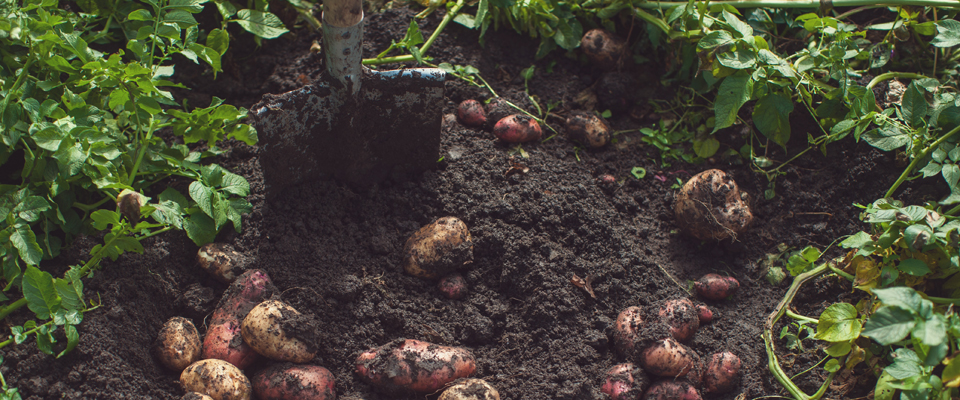One Potato, Two Potato
April 27, 2017
Potatoes are the fifth largest food crop produced in the world. Human beings have been cultivating potatoes since somewhere around 8,000 to 5,000 B.C. With such a global and versatile history, potatoes have survived it all, and they have an interesting history that includes:
- Around 1532, Spanish Conquistadors brought the potato from Peru back to Europe, and the crop did not reach its famous home in Ireland until 1589. Potatoes spread across Europe for the next forty years and became known as the easiest to grow and most nutritious food crop.
- Potato blight broke out in the 1840’s, decimating Ireland’s staple crop and leading to famine.
- Historian William H. McNeill argues that being able to feed a fast growing population allowed a few European nations to assert dominance over the rest of the world between 1750 and 1950, fueling the rise and spread of Western culture. Who knew the potato held such power?
- The first intensive fertilizer, Peruvian Guano, from The Guano Islands in Peru, was used for centuries in Peru before it was pushed as a fertilizer to Western Europe and America for root crops, like potatoes. Many farmers with poor soils credited guano for successful root crops, but ironically, many scientists argue today, that guano actually may have been the carrier of late blight that caused The Potato Famine.
- Potatoes also had fallen victim to the now notorious Colorado potato beetle, initiating the first artificial pesticide: a form of arsenic.
- A lighter part of the potatoes history comes from the French court. King Louis XVI and Marie Antoinette adorned their hair and buttonholes with potato flowers, which inspired a fashion trend among the aristocracy to wear potato plants.
I bet that history lesson made you pretty hungry. You should probably plant potatoes in your garden this season to fill you up.
Growing Potatoes
Choosing a variety comes down to what you prefer and what time of year you’d like to harvest. There are many different varieties of potatoes that range in color, texture and flavor. You can choose red potatoes for potato salad, russet potatoes for fries and baking or fingerlings for a creamy, smooth delectable little tater.
Potatoes can be planted on or two weeks after the last frost date. This makes potatoes one of the earliest crops to plant. They are also a great mid or late season crop to plant for fall harvesting. When planting potato seed, you want to dry the skin enough that it prevents rotting. A day or two before planting, cut the potatoes so that each seed you plant has around two or three eyes. The eyes of the potato are the little spuds that start to grow on aging potatoes. You want to plant potatoes with the eye facing up. The eye will grow shoots that form the foliage and flowers above ground, while your potatoes sprawl underground.
There are dozens of ways to plant potatoes, but whether you use field rows, bags or wood pallets, potatoes are one of the easiest crops to grow. Because potatoes are a root vegetable, you want your soil to be nicely cultivated and as fluffy as possible. Check your pH and soil nutrition. Potatoes adapt to acidic soils with a pH below 6.0, but can face challenges if soil is not nutritious enough to support good production yield. Plant seeds about a foot apart and about four inches deep in furrows. When your potato plants grow to about 10 inches, you should hill your potatoes, or rake the soil in your beds upwards, burying half of the stem into a mound. Hilling can be done a few times a season. While hilling is exhausting, it is crucial and will create more room for more potatoes to grow, significantly benefitting your harvest.
Potato plants die back as they finish their life cycle, which means they tell you when they are ready. Digging should commence when the foliage starts to yellow and wither. Brush off some of the excess dirt and dry indoors for a day or two. Take care to protect potatoes from sunlight to prevent greening. If properly stored in a cool dry place, potatoes can last for months during the Winter.
After harvesting, plant the space with nutritionally complementary crops, like beans, squash or a cover crop of buckwheat, to replenish the depleted nutrients used up by the potatoes.
If you are looking for a hearty crop that stores well and provides versatility in the kitchen, consider planting potatoes this season. Supply your family or customers with a nice, weighty potato crop this season, and if you’re feeling courtly, do as the French and dress your hair in potato flowers.
Contributed by Amanda Williams

